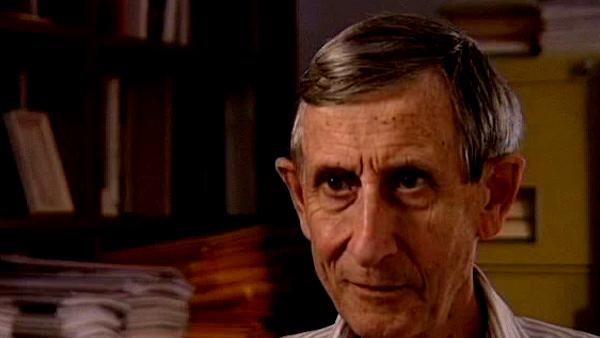NEXT STORY

The ground state energy of a hard-sphere Bose gas - Elliot Lieb
RELATED STORIES

NEXT STORY

The ground state energy of a hard-sphere Bose gas - Elliot Lieb
RELATED STORIES


|
Views | Duration | |
|---|---|---|---|
| 101. One-dimensional ferromagnets | 1136 | 02:32 | |
| 102. The ground state energy of a hard-sphere Bose gas - Elliot Lieb | 1142 | 02:06 | |
| 103. Energy levels of complex systems: background | 1133 | 03:50 | |
| 104. Inviting Mehta to work on circular ensembles | 1125 | 02:13 | |
| 105. My work with Mehta is now more relevant | 1060 | 04:49 | |
| 106. A bottle of champagne to prove the stability of matter | 1430 | 03:40 | |
| 107. Lieb and Thirring clean up my matter stability proof | 1691 | 03:24 | |
| 108. Phase transitions in three dimensional ferromagnets | 918 | 03:00 | |
| 109. Could gravity vary with time? | 1363 | 06:09 | |
| 110. Work by Dyson and Alex Shlyakhter on the fine-structure constant | 1054 | 04:08 |


I forget how I got interested in one-dimensional ferromagnets. It was always a generally sort of accepted dogma that you couldn't have ferromagnets in one dimension, that you needed at least two dimensions to create the co-operative behaviour in a collection of spins, because the standard models of ferromagnets only work in two dimensions or higher. They all work very well in three dimensions, which is the world we live in. In one dimension the ordering forces would not be strong enough, and it was clearly true that if you had short range interactions then you couldn't have long range order in one dimension. But the question had never been raised whether if you had long range interactions in one dimension you could actually have a ferromagnet. So I got interested in that and I found a model of a one-dimensional ferromagnet where I was able to prove that it really does have a long range order - in which the interaction between spins goes with the power of the distance, I think the inverse - the critical - the lower force is where it has inverse square interaction, so that the interaction between two spins goes like one over D2 where D is the distance. And in that case there is, in fact, an order-disorder transition, and there is an ordered phase and a disordered phase. And I was able to prove that, and it was not easy. This was again an interesting problem. It was in fact in this connection that I used the Littlewood method which I mentioned yesterday. I don't remember who first suggested this as a problem. It might have been Elliot Lieb. It's a whole subdivision of physics, one-dimensional physics, which is delightful to me because it's a field in which almost all problems are solvable, in which analytical methods actually work much better than they do in higher dimensions. So it's a playground for theoretical physicists who are able to do rigorous mathematics, even if it has not much to do with reality.
Freeman Dyson (1923-2020), who was born in England, moved to Cornell University after graduating from Cambridge University with a BA in Mathematics. He subsequently became a professor and worked on nuclear reactors, solid state physics, ferromagnetism, astrophysics and biology. He published several books and, among other honours, was awarded the Heineman Prize and the Royal Society's Hughes Medal.
Title: One-dimensional ferromagnets
Listeners: Sam Schweber
Silvan Sam Schweber is the Koret Professor of the History of Ideas and Professor of Physics at Brandeis University, and a Faculty Associate in the Department of the History of Science at Harvard University. He is the author of a history of the development of quantum electro mechanics, "QED and the men who made it", and has recently completed a biography of Hans Bethe and the history of nuclear weapons development, "In the Shadow of the Bomb: Oppenheimer, Bethe, and the Moral Responsibility of the Scientist" (Princeton University Press, 2000).
Tags: Elliot Lieb
Duration: 2 minutes, 33 seconds
Date story recorded: June 1998
Date story went live: 24 January 2008